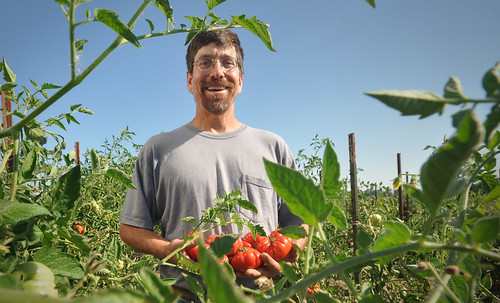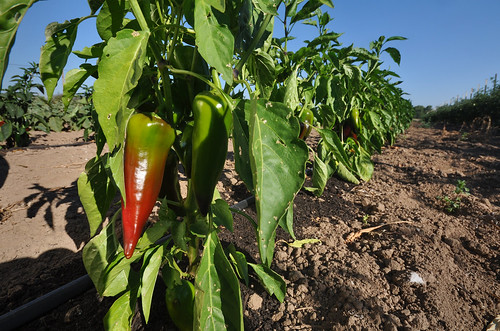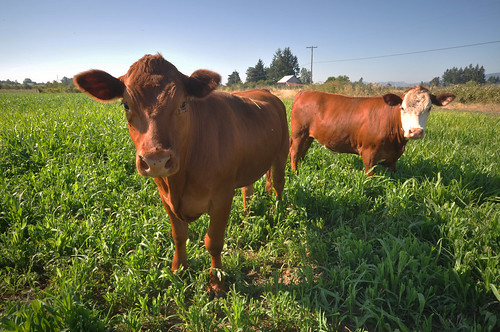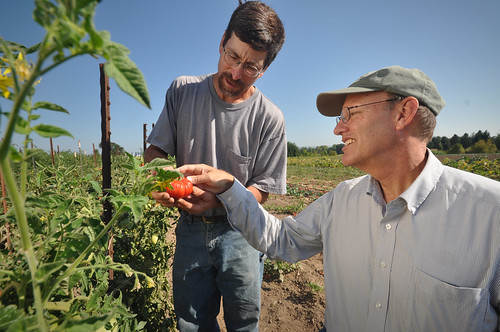
For agricultural producers, it’s an age-old question: How do you grow the largest, healthiest, most-profitable crops possible? Oregon organic farmer Chris Roehm says the secret is in the soil.
Co-owner and operator of Square Peg Farm in Forest Grove, Roehm is among a growing number of producers, both conventional and organic, who are realizing the benefits of improving the health and function of their soil through working with USDA’s Natural Resources Conservation Service (NRCS).
"Investing in soil health is fundamental to good organic growing. They are essentially one and the same," he says. Roehm says he and his wife Amy Benson plan for the long-term, and he thinks healthy soil is the best way to maximize their returns over time.
Farmers like Roehm realize that healthy soil is a complex ecosystem teeming with life. The healthy soil nourishes and supports the plants that grow from it. In fact, plants and soil feed and protect each other.

According to Roehm, "By investing in the soil...you see payoffs in lower weed pressure, better fertility, less pest pressure and healthier plants that are able to deal with disease pressure and insect pressure that less healthy plants are not able to deal with."
Non-organic farmers have several short-cuts available. They can apply conventional fertilizers, which directly feed the plants, but that can harm the soil or adversely affect water quality.
Organic farmers, restricted from using synthetic fertilizers, must rely on natural systems. That is why Roehm mimics nature by integrating grazing into his practice.

"One of the components of our soil health management plan that we are happiest with is the integration of growing forage crops for grazing animals with our annual vegetable production," he says.
By alternating between growing and grazing, Roehm fertilizes his land in a natural, sustainable way that improves the health of his livestock, soil and vegetables. The results are impressive.
"The first year after that foraged ground has been turned over is like magic, everything just flies up out of the ground, there are hardly any weeds, the bugs don’t know what to do, it’s really fantastic," Roehm says.

When you're looking for the best answer on how to grow your crops, think long-term, like Chris Roehm and so many others, and unlock the secrets in the soil. As Roehm says, “If your long-term strategy is to grow organically, the only successful way to achieve that is to work on feeding the soil.”
"[Our customers] noticed we have a lot more stuff to sell and that's not because we increased the acreage, it’s because the plants are making more saleable produce for us."
For more information on NRCS soil health and assistance for organic producers visit www.nrcs.usda.gov/organic.


